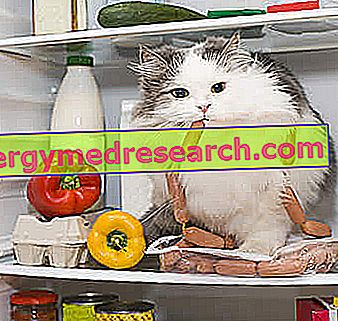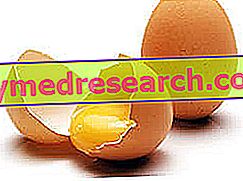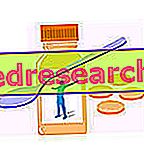Introduction
Nutrition is the fundamental basis for maintaining the health of each form of animal life.
This short article will focus on the basic principles of the domestic feline diet.

By changing the cat's diet it is possible:
- Optimize the quality of life of the animal.
- Avoid the onset of serious, painful and difficult to cure (as well as expensive) diseases.
- Make a positive impact on your longevity.
Vegetarian Cats: Yes Can?
The diet of each animal species is regulated by physiological demands and by the capacity of digestion-metabolism.
Omnivorous animals (some more and some less) can survive brilliantly by managing the various types of food based on environmental availability.
Everyone knows that a forced herbivore (such as a cow) is not allowed to eat meat or derivatives. Similarly, a forced carnivore (such as the cat) should not follow a vegetarian diet.
A feline fed with cereals, legumes, seeds, fruits and vegetables does not maintain an optimal state of health.
In its natural state, the cat would not eat these foods. However, if they are raised in captivity, felines are subjected to "humanization", which induces an inevitable suppression of animal instinct.
Moreover, the food industry has developed processing techniques that make vegetable-based ingredients more palatable.
With a few minor exceptions, it is possible to state that most of the cat foods, which contain cereals, legumes, seeds, fruits and vegetables, are of the dry type, namely croquettes and croquettes.
Dry Food: No Thanks!
More and more veterinarians recommend removing dry food from the cat's diet.
The reasons for this "nutritional correction" are different. Among the most important we recognize:
- Low water content.
- Excess carbohydrates.
- Excess of vegetable protein and lack of those animals.
- Lack of essential thermolabile or oxidizable nutrients.
- Poor hygiene, infestation and contamination.
Little water
BECAUSE IT IS IMPORTANT?
Water is an extremely important nutritional factor for maintaining body hydration, which is a prerequisite for the health and life of any living being.
Cats do not have a very pronounced thirst stimulus.
Probably, this deficiency arises from the fact that their prey (mice, birds, reptiles, insects etc.) are already very rich in "edible water". In practice, in the wild the cat's diet DOES NOT require a significant consumption of water as a drink.
Even at home, if the cat were fed exclusively with meat products (wet) it would not risk systemic dehydration as much as with dry food.
For the cat, the possibility of chronic dehydration and consequent pathologies of the urinary tract increases almost proportionally to the amount of croquettes and croquettes consumed.
By increasing the amount of water in the cat's diet the following reactions are obtained:
- Optimization of renal function.
- Reduction of renal fatigue.
- Reduced production of kidney stones and urinary tract blockages.
- Reduction of infectious and non-infectious cystitis.
COMPARISON BETWEEN CAT FOODS
- A natural feline prey contains about 70-75% of water.
- Canned meat reaches 78%.
- The croquettes bring only 5-10%.
Comparing the amount of water present in cat food, it is clear that canned meat is the most similar to a natural prey.
Ignoring what we have stated about thirst, we are led to believe that a cat fed with dry food is perfectly able to compensate for the lack of food water by drinking more.
However, looking at the behavior of felines fed with croquettes and croquettes, it is noted that the aptitude to drink is not sufficient to compensate for the lack of food water. The total water supply corresponds to 50% of the cat's needs.
Some try to fill this gap simply by wetting dry food. It should be specified that the increase of free water in croquettes and croquettes drastically reduces their conservation. The rehydrated food MUST NOT be consumed beyond 20-30 'from the time of administration.
Too many carbohydrates
DO THEY BAD CATS?
The dry food (more rarely the wet one) is rich in foods of vegetable origin that contain carbohydrates.
The metabolism of cats does not use carbohydrates optimally.
This happens due to the lack of specific enzymatic pathways, instead present in humans and other mammals.
Moreover, excess glucose is easily converted into fatty acids and deposited in adipose tissue, contributing to overweight.
WHAT INGREDIENTS CONTAIN THEM?
In the past, the most used starchy ingredients for the formulation of dry food were cereals (wheat, rice, corn).
However, after the onset of numerous controversies, the production of "low" or "grain-free" feed began (ie with few or no cereals).
In fact, it was only a commercial strategy; in fact, if on the one hand the companies have removed the cereals, on the other they have compensated through the use of legumes and tubers (mainly soya, peas and potatoes).

In the cat's diet, carbohydrates should cover at most 1-2% of total calories. Instead, the croquettes contain up to 35-50% or even more. Most canned wet foods contain approximately <10% (but not all).
Protein
Quality
Cats are "designed" to eat and metabolize proteins of animal origin, not those of a vegetable nature.
Peptides in meat, cereals, legumes, vegetables and fruits have a different biological value.
The biological value is a protein classification system based on the composition of essential amino acids. It is as high as it gets closer to that of the proteins of the organism that nourishes it.
Amino acids are the "pieces" that form proteins and the adjective "essential" means that the body is NOT able to produce them independently.
Vegetable proteins have a lower biological value than animal proteins and are deficient in amino acid taurine.
In cat nutrition, taurine is one of the most important amino acids. Its deficiency causes blindness and heart problems. In the 1980s, taurine deficiency in croquettes has decimated a very large population of domestic cats. Today, companies use to supplement dry feed with synthetic taurine (of Chinese derivation).
Quantity
To assess the protein content of cat food it is necessary to consult the food label.
It is useful to compare the various products using the same unit of measurement; the most widespread refers to the "dry substance".
Obviously, the choice of raw materials by companies is based on the profit margin on the finished product. This margin is greater when using ingredients of vegetable origin (corn, rice, soy, wheat, etc.).
Thermolabile and oxidizable nutrients
Dry food is more elaborate and processed than the wet one.
The application of high temperatures has different effects:
- Reduces the concentration of water from 70% to 5-10%.
- Sanitize food from microorganisms or parasites.
- It alters the nutritional profile, destroying many molecules contained in it.
Although integrated, there is no guarantee that dry food reflects the same nutritional characteristics of a fresh or simply cooked product.
Furthermore, both prolonged conservation and exposure to environmental oxygen promote the oxidation of many sensitive nutrients.
Some of these are essential, that is, the feline organism is not able to produce independently and must take with the diet.
The most compromised ones are:
- Thermolabile vitamins: vitamin C, vitamin B1, vitamin B2, vitamin B5, folic acid, carotenoids (pro vitamin A) and vitamin E.
- Oxidisable vitamins: especially vitamin A, vitamin C and vitamin E.
- Oxidizable mineral salts: especially zinc, selenium and iron.
- Oxidisable and thermolabile fatty acids: all unsaturated and above all polyunsaturated.
Infestations and Contaminations
Dry food is far from clean, hygienic, safe and free of pathogens.
The industries consider that the croquettes and the croquettes, being low in water, should not be kept at low temperature.
Dry food is stored first in warehouses, then on store shelves and finally in the home.
The storage time is not limited to a few weeks, but easily reaches several months.
In addition to chemical and physical decay, dry food is often subjected to contamination / infestation of: bacteria (eg Salmonella), mold and mycotoxins, mites, cockroaches and their faeces.
Mold and Mycotoxins
Molds are pathogens that grow mainly on the seeds of cereals and legumes.
Some molds produce mycotoxins, or potentially lethal poisonous molecules.
Cereals and legumes are not part of the cat's natural diet. This means that the animal's body is not designed to combat any molds and mycotoxins that interest them, even at low concentrations.
Also for this reason, it cannot be ruled out that the presence of mold and mycotoxins can play an important role in the onset of certain cat diseases (especially intestinal diseases).



